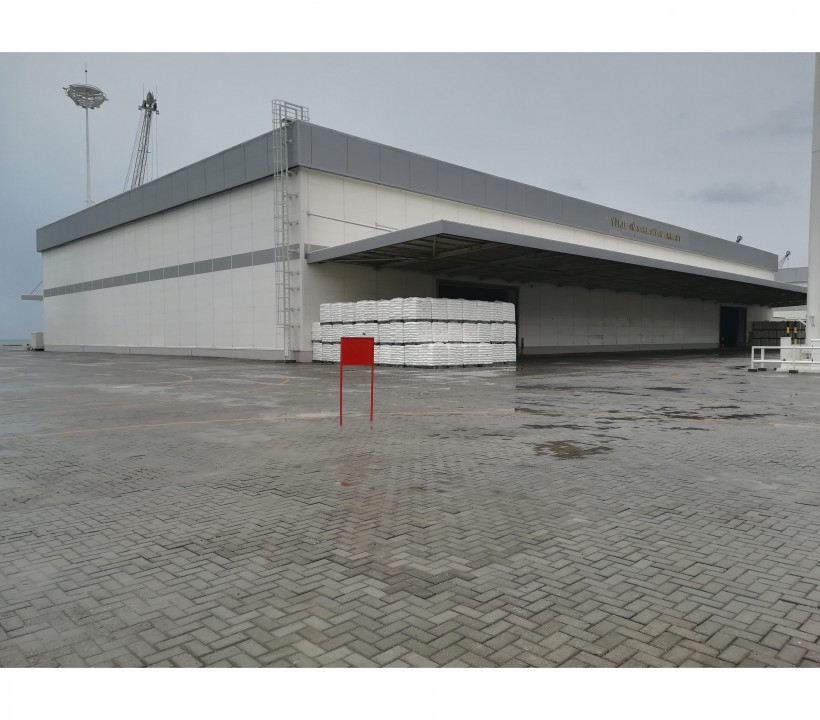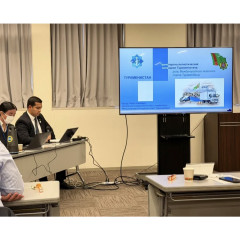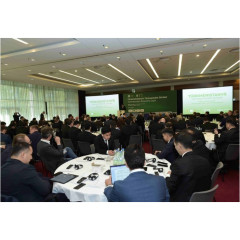

The international seaport of Turkmenbashi, being a new port in the Caspian region, has a number of advantages and services for handling cargo. The favorable territorial location of the country and the increasingly active participation of Turkmen carriers and logistics companies in international transportation contribute to a daily increase in the volume of transit cargo. Some transit cargoes transported to the Turkmenbashi seaport are stored in a customs warehouse.

On April 16, 2022, the seaport of Turkmenbashi received a license for the storage of goods in a special customs regime. This service allows you to store various cargoes and goods on the territory of the port without paying customs duties and registration for up to 3 years.
Customs warehouse - goods imported into the territory of Turkmenistan are stored under customs control without payment of customs duties, taxes, as well as prohibitions and restrictions of an economic nature established by the legislation of Turkmenistan.
Consignments of goods placed in the regime of customs storage are under constant customs control. The period of stay of goods in the customs storage regime is determined by specific terms agreed in advance. This is not only convenient, but also beneficial for trading companies and manufacturers, as they get the opportunity to systematically ship and distribute cargo to neighboring regions directly from the port. Companies that carry out export-import operations receive certain advantages due to the developed infrastructure of the seaport, convenient and spacious storage facilities, modern loading equipment, roads and railways laid in close proximity, and the ability to quickly send goods to neighboring countries or to Turkmenistan. The seaport includes 5 terminals and each of them has its own separate warehouse, on the territory, which can accommodate any products allowed by the current legislation of the country to cross the state border, as well as storage:
1. The ferry-passenger terminal has open and closed warehouses, which involve the storage of goods along with vehicles. The total area of the terminal is 230,000 square meters and is capable of serving 300,000 passengers and 75,000 vehicles per year.
2. The container terminal is capable of handling 400,000 TEU containers per year. The terminal has closed warehouses with a total area of 9,984 square meters and an open warehouse with a total area of 3,060 square meters.
3. The bulk cargo terminal is capable of handling and storing iron ore, cement, coal, cereals, sugar, salt and other bulk cargo with a throughput capacity of 3,000,000 tons of cargo per year. In addition to grain storage, the terminal has 14 silos with a total capacity of 35,000 cubic meters and 8 cement silos with a total capacity of 6,000 cubic meters. The terminal has an open warehouse with an area of 37,000 square meters and closed warehouses with a total area of 8,512 square meters.
4. The general cargo terminal has the capacity to handle 4,000,000 tons of cargo per year. The terminal is designed for loading and unloading steel, iron, wood materials, vehicles, equipment and heavy loads. The terminal has an open warehouse of 75,000 square meters and an closed warehouse of 26,394 square meters.
5. The polypropylene terminal is capable of processing up to 120,000 tons of polypropylene per year. The terminal has a closed warehouse with a capacity of up to 18,750.
It is also important to note that the International Seaport of Turkmenbashi confirmed compliance with the international standards "ISO 9001:2015 - Quality Management System", "ISO 14001:2015 - Environmental Management System" and "ISO 45001:2018 - Occupational Health and Safety Management Systems", which indicates that the Turkmenbashi Sea Port provides a high level of services, takes into account the needs and expectations of customers, and also strives for continuous improvement of its own activities. The introduction of ISO standards will help increase the confidence in the activities of the Turkmenbashi International Port on the part of potential partners, reduce costs due to the optimization and standardization of processes, increase the level of environmental protection and the competitiveness of the seaport in the international market.
A number of advantages and specific functions, the presence of open and closed warehouses, as well as modern equipment makes the International Seaport of Turkmenbashi an important player in the international transport and logistics system, always ready for mutually beneficial and long-term cooperation.









